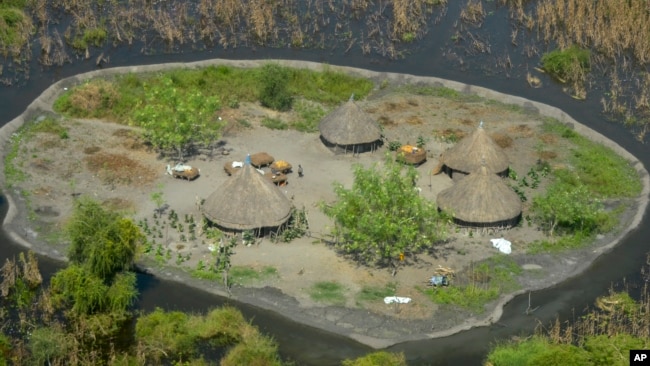南スーダンの水路事業の行方
有効なのか、損失なのか???
100年前からの事業が止まっているということの意味するところは?
ミクロで近視眼的に捉えるのではなく、マクロの視点で科学的、生態系的議論が深まることを期待します!!
今日もVOAで英語を学びましょう!!
南スーダンの水路事業再稼働計画が抵抗勢力に直面(和訳)
South Sudan Plan to Re-Start Waterway Project Faces Resistance
May 23,2022
南スーダンの人々は、100年以上前に検討された、国内を流れる水の流れを変えるプロジェクトを再開するかどうかを議論しています。
ジョングレイ運河プロジェクトは、1904年に初めて検討されました。南スーダンのスッド湿地帯から水を移動させ、ナイル川を下ってスーダンとエジプトに送るというものです。プロジェクトが始まったのは1950年代。30年間作業が続けられたが、完成には至りませんでした。全長340kmのうち、270kmが掘られたに過ぎません。
ジョン・アケックはジュバ大学の指導者です。彼は、この運河が南スーダンに深刻な問題を引き起こすと考え、”スッドを救え”というキャンペーンを始めました。
湿地帯が乾燥すれば、その地域につながる”すべての生業”が失われると彼は言います。彼は、大統領に送る嘆願書と呼ばれる文書に署名を集め始めました。運河計画の中止を求めるものです。110万人の署名が集まれば、それを大統領に送ります。これまでのところ何千もの署名を集めています。
「水は石油やダイヤモンド、金よりも価値があります。」と晴れは言います。
アケック氏のように、このプロジェクトは湿地帯を傷つけると言う人もいますが、洪水がより大きな問題を引き起こしていると言う人もいます。
今年初め、南スーダンの副大統領の1人であるタバン・デン・ガイ氏は、洪水の増加を理由に運河プロジェクトの再開を呼びかけました。ジョングレイ州とユニティ州に住む人々は、動物の飼育や農地の維持ができなくなったと言っています。
マーサ・アチョルさんは農民で、6人の母親でもあります。彼女は”いたるところに水があり”そして、洪水は”私たちの農場を破壊してしまった”と話します。以前は食料の心配をしたことはありませんでしたが、今はしていると言います。マヤック・デンさんも農民です。彼も同じことを話しています。「今日、私たちには十分なものがありません。」と彼は言います。
マナワ・ピーター・ガツクオト氏は南スーダンの水担当大臣です。彼は、運河ができれば、この地域の観光客が増え、新たな輸送機会が生まれると付け加えます。
しかし、デン・マジョク・チョル氏のような環境保護主義者は、このプロジェクトが湿地帯の生態系を損なうことを懸念しています。オックスフォード大学で環境学の上級学位を取得しているマジョク・チョル氏は、現在の洪水は、この地域の長い歴史の中では小さな変化に過ぎないと述べています。
彼は、湿地帯から水を取り除くことで降雨量が減り、南スーダンの人々だけでなく、下流のスーダンやエジプトの人々にも影響が及ぶことを危惧しています。
ニャル・ティットママー氏はSudd Instituteで環境プログラムのディレクターを務めています。ティットママー氏によると、湿地は南スーダンにとって毎年10億ドルの価値があるとのことです。
「湿地帯が排水されれば、これは失われるでしょう」と彼は言います。
South Sudan Plan to Re-Start Waterway Project Faces Resistance
The people of South Sudan are debating whether to restart a project first considered over 100 years ago to change the way water moves through the country.
The Jonglei Canal project was first studied in 1904. It would move water from the Sudd wetlands in South Sudan and send it down the Nile River to Sudan and Egypt. The project started in the 1950s. Work went on for 30 years, but it was never finished. By then about 270 of a total 340 kilometers had been dug.
John Akec is a leader at the University of Juba. He started a campaign called “Save the Sudd” because he believes the canal will cause a serious problem for South Sudan.
If the wetlands dry, he said, “all the livelihoods” connected to that area will be lost. He started collecting signatures on a document called a petition that he will send to the nation’s president. It calls for an end to the canal plan. If he gets 100,000 signatures, he will send it in. So far he has many thousands.
“Water is more valuable than oil, diamonds, gold,” he said.
While some, like Akec, say the project would hurt the wetlands, others say the flooding is causing a greater problem.
Earlier this year, one of South Sudan’s vice presidents – Taban Deng Gai – called to restart the canal project because of increased flooding. People who live in Jonglei and Unity states say they have not been able to raise animals and maintain their farmland.
Martha Achol is a farmer and mother of six. She said, “there is water everywhere” and the floods “have destroyed our farms.” She said she never used to worry about food, but she does now. Mayak Deng is another farmer. He said the same thing. “Today, we don’t have enough,” he said.
Manawa Peter Gatkuoth is South Sudan’s water minister. He added that the canal would permit more visitors and new transport opportunities in the area.
But environmentalists like Deng Majok Chol worry that the project will hurt the ecosystem of the wetlands. Majok Chol, who is working on an advanced environmental degree at Oxford University, said the current flooding is only a small change within the long history of the area.
He fears that removing water from the wetlands will reduce the amount of rainfall and affect people in South Sudan as well as people downstream in Sudan and Egypt.
Nhial Tiitmamer is the director of an environmental program at the Sudd Institute. Tiitmamer said the wetlands are worth $1 billion to South Sudan each year.
“This will be lost if the wetlands are drained,” he said.
Words in This Story
canal– n. a long, narrow waterway created by people so boats can pass or water can move to supply fields
livelihood – n. a way of earning money in order to live
petition- n. a written document that people sign so they can show they want a person or organization to change something
ecosystem– n. everything that exists in an environment
drain- v. to remove water from something or a place

